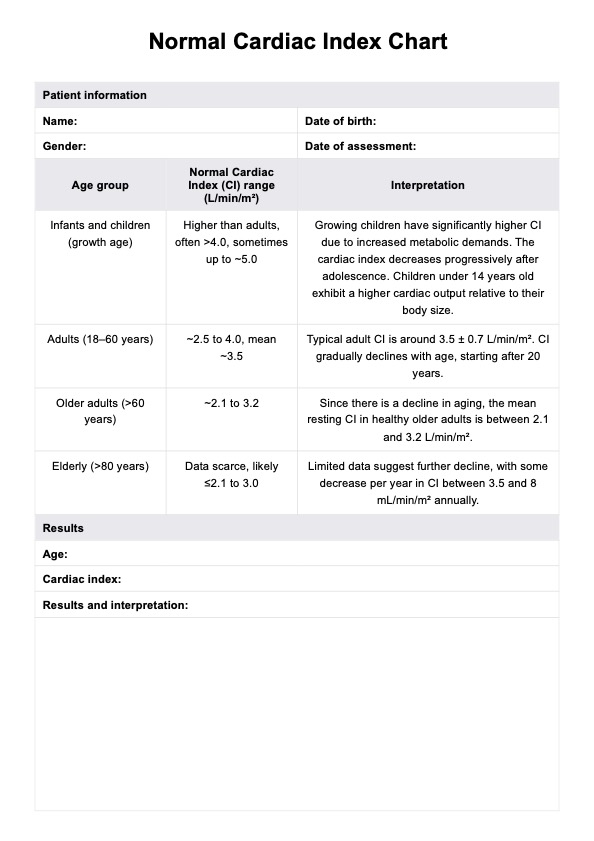It serves as a reference tool for healthcare practitioners to compare a patient's cardiac index against established normal ranges, aiding in diagnosing and monitoring heart conditions.

Normal Cardiac Index
Learn how the Normal Cardiac Index Chart helps assess cardiac output, heart function, and stroke volume across all age groups in clinical and critical care settings.
Normal Cardiac Index Template
Commonly asked questions
Techniques like echocardiography or thermodilution are commonly used to measure the Cardiac Index. The obtained value is adjusted based on the individual's body surface area for accurate assessment.
They provide expected Cardiac Index values for different age groups (infants, children, adults, and elderly), helping to distinguish normal heart function from potential abnormalities based on age.
A low cardiac index (<2.2 L/min/m²) suggests low cardiac output, often linked to heart failure, cardiogenic shock, or severe hypovolemia. A high cardiac index (>4.0 L/min/m² in adults) may indicate hyperdynamic states such as sepsis, anemia, or thyrotoxicosis, where increased flow does not always mean adequate tissue perfusion.
EHR and practice management software
Get started for free
*No credit card required
Free
$0/usd
Unlimited clients
Telehealth
1GB of storage
Client portal text
Automated billing and online payments











